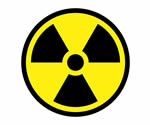
07 Jul Radioactivity
For thousands of years Aboriginals have recognised a phenomenon they call ‘sickness country’ in parts of Kakadu. Ironically this coincided with high concentrations of uranium, thorium and radon in the water and air.
Radioactive materials contain unstable atoms that ‘decay’ over time. Unlike electromagnetic fields in building wiring, radioactivity is a form of ionising radiation that can damage human DNA. The most well documented of these is radon gas which you cannot see or smell and occurs naturally in rocks and soils as a result of the decay of uranium in the earth’s crust. It is found naturally in low concentrations around the globe; however it can seep into buildings from cracks in the foundation where it can accumulate to much higher levels.
Homes that are most susceptible to radon gas are those built on granite or phosphate rock especially if they have a basement and are poorly ventilated. Radon accounts for over 21,000 deaths annually in the US. As a result of the magnitude of the problem, radon testing is common practise with real estate transactions in the USA. Whilst the extent of the problem in Australia is essentially unknown, the release of the Radiometric Map by Geoscience Australia in 2009 highlights areas of high radioactivity.
Building materials may also contain various amounts of natural radioactive nuclides especially those derived from rock and soil. Materials derived from granite, alum shale and other types of rocks are most likely to be radioactive and include concrete, aerated concrete, bricks, natural gypsum, natural building stones, as well as materials derived from industrial by-products such as phosphogypsum, blast furnace slag, red mud from alumina production and coal fly ash. Naturally occurring radioactive building materials are not regulated, so the extent to which a building material is radioactive will need to be assessed individually.
Testing
Testing for radioactive isotopes in your home or in a building material like granite, slate or stone requires a Geiger counter. To assess the radioactivity of a site, refer to a geologist.
DID YOU KNOW
Radon gas is the second leading cause of lung cancer after smoking and accounts for around 14% of all lung cancers worldwide (World Health Organisation, 2009).
